The Scotch-Irish and New York
The Scotch-Irish story in New York can be traced back over 300 years and is an important part of the city’s history. People with roots in Ulster were settling in New York and its hinterland by the late 1600s. Many more came in the following centuries. Together the Scotch-Irish have made a major contribution to the economic, religious and cultural life of the city. This exhibition tells you something of their story.
Ireland: An Island Of Cultural Variety
Throughout its history, Ulster, the northern province of Ireland, has been a place where many different peoples have left their influence. In the last millennium Vikings, Anglo-Normans, Huguenots, Moravians, Italians, Jews and many others have settled here. The strongest cultural influences, however, have been English, Irish and Scottish, a triple blend that has given Ulster its distinctive character.
Transatlantic Kinfolk: From Ulster to America
The origins of the movement of Scotch-Irish families to America can be traced to the seventeenth century and was well underway by the 1680s. Many of the earliest emigrants settled in the region of Chesapeake Bay. Their reasons for leaving included economic pressures and religious persecution due to their Presbyterian beliefs. The first recorded use of the term Scotch-Irish is found in a Maryland court document of 1689.
Three Names For The Same People
Ulster-Scots, Scotch-Irish and Scots-Irish are three names for a people whose origins can be traced to Scotland. In Ulster, where they settled in large numbers in the 1600s, they are known as the Ulster-Scots. In America, they are known as the Scotch-Irish or Scots-Irish. All three terms have a long pedigree – the earliest recorded use of ‘Scotch-Irish’ can be found in Maryland in 1690.
The Scotch-Irish And America
Over the centuries Scotch-Irish families have travelled to every corner of the globe in search of new lives and new opportunities. In the United States their influence has been huge and their legacy includes pioneers, presidents, military commanders, religious leaders, educators, philanthropists and giants of industry and commerce.
Migration in the 1700s
Emigration from Ulster to America accelerated in the late 1710s. Estimates of the numbers leaving Ulster in the 1700s vary but were perhaps in the region of 120,000–180,000 people. Chain migration was hugely significant as emigrants followed the routes taken by family members and neighbours from home who had gone before.
Emigration from Ulster to America accelerated in the late 1710s. Estimates of the numbers leaving Ulster in the 1700s vary but were perhaps in the region of 120,000–180,000 people. Chain migration was hugely significant as emigrants followed the routes taken by family members and neighbours from home who had gone before.
Letter from America
One of the earliest surviving letters by an immigrant from Ulster is the letter that James Murray wrote from New York to Rev. Baptist Boyd, a Presbyterian minister in County Tyrone, in 1737. The author waxed lyrical about the opportunities offered by America. This letter was widely distributed and was published in several American newspapers.
Read this Letter, and look, and tell aw the poor Folk of your Place, that God has open’d a Door for their Deliverance; … for I will tell ye in short, this is a bonny Country, and aw Things grows here that ever I did see grow in Ereland; and wee hea Cows and Sheep, and Horses plenty here, and Goats, and Deers, and Racoons, and Moles, and Bevers, and Fish, and Fouls of aw Sorts …
One of the earliest surviving letters by an immigrant from Ulster is the letter that James Murray wrote from New York to Rev. Baptist Boyd, a Presbyterian minister in County Tyrone, in 1737. The author waxed lyrical about the opportunities offered by America. This letter was widely distributed and was published in several American newspapers.
Read this Letter, and look, and tell aw the poor Folk of your Place, that God has open’d a Door for their Deliverance; … for I will tell ye in short, this is a bonny Country, and aw Things grows here that ever I did see grow in Ereland; and wee hea Cows and Sheep, and Horses plenty here, and Goats, and Deers, and Racoons, and Moles, and Bevers, and Fish, and Fouls of aw Sorts …
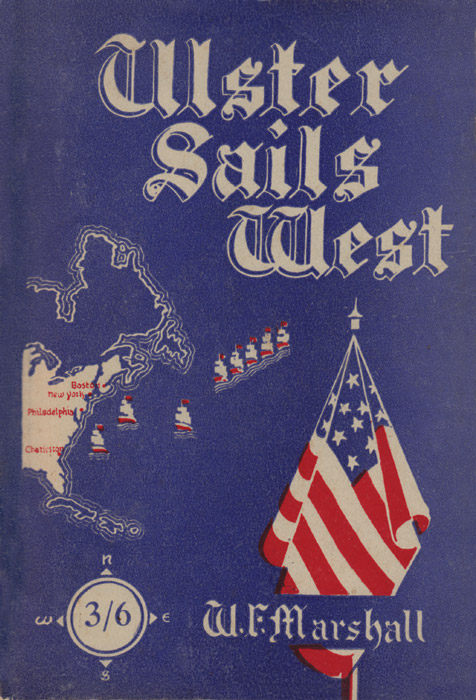
This 1940s publication celebrated Ulster’s links with America at the time when thousands of GIs were stationed in Northern Ireland

The 1737 edition of The Pennsylvania Gazette which published James Murray’s letter
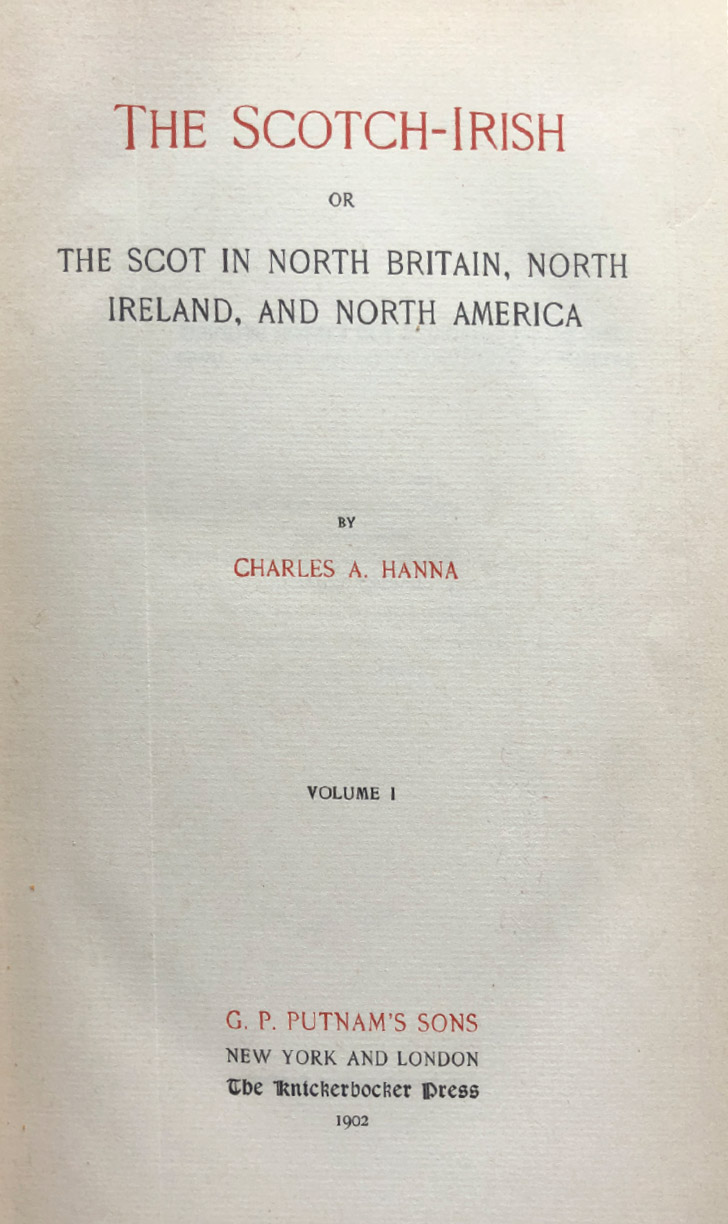
Scots-Irish cover
Migration Since 1800
If the numbers emigrating from Ulster to America in the 1700s were impressive, these were dwarfed by the figures for the nineteenth century when possibly as many as 1.5 million people crossed the Atlantic. Emigration from Ulster in this period was more religiously and culturally diverse. However, the transatlantic migration of the Scotch-Irish remained hugely significant, both numerically and proportionately. The story of the relationship between Ulster and America comes right down to the present as the United States continues to attract many of our young people in search of new opportunities.
If the numbers emigrating from Ulster to America in the 1700s were impressive, these were dwarfed by the figures for the nineteenth century when possibly as many as 1.5 million people crossed the Atlantic. Emigration from Ulster in this period was more religiously and culturally diverse. However, the transatlantic migration of the Scotch-Irish remained hugely significant, both numerically and proportionately. The story of the relationship between Ulster and America comes right down to the present as the United States continues to attract many of our young people in search of new opportunities.
The Clintons and New York
The movement of families to America in the early eighteenth century was driven by economic and religious difficulties at home, combined with the prospect of new opportunities and freedoms across the Atlantic. The late 1720s was another period of intense suffering in Ireland, with a series of harvest failures. As a result there was another great surge of emigration.
The Clinton Family
Charles Clinton was an elder in the Presbyterian congregation of Corboy in County Longford, just outside the province of Ulster. In 1729 he organised a major exodus of his fellow Presbyterians to America. The voyage was nothing short of horrific. The ship spent 20 weeks at sea – typically a transatlantic voyage lasted 6–10 weeks – and more than 80 passengers died, including two of Clinton’s children. Charles kept a journal of the voyage in which he identified those who had perished.
Charles Clinton was an elder in the Presbyterian congregation of Corboy in County Longford, just outside the province of Ulster. In 1729 he organised a major exodus of his fellow Presbyterians to America. The voyage was nothing short of horrific. The ship spent 20 weeks at sea – typically a transatlantic voyage lasted 6–10 weeks – and more than 80 passengers died, including two of Clinton’s children. Charles kept a journal of the voyage in which he identified those who had perished.
Move to Ulster County
The Clinton family and others in their party settled in Ulster County and set up home at Little Britain. Here Charles farmed and worked as a land surveyor. Among the other Scotch-Irish families to settle here were the Youngs – Thomas Young became a prominent figure in the Sons of Liberty and was one of the main organisers of the Boston Tea Party. During the Revolutionary War Clinton’s sons, James and George, served in the Continental Army.
The Clinton family and others in their party settled in Ulster County and set up home at Little Britain. Here Charles farmed and worked as a land surveyor. Among the other Scotch-Irish families to settle here were the Youngs – Thomas Young became a prominent figure in the Sons of Liberty and was one of the main organisers of the Boston Tea Party. During the Revolutionary War Clinton’s sons, James and George, served in the Continental Army.
Governor and Vice-President
George Clinton became a prominent figure in New York politics. In 1777 he was elected the first Governor of New York, holding office for 21 years (1777–95 and 1801–04). In 1805 he became the fourth Vice-President of the United States, serving under Presidents Thomas Jefferson and James Madison. He died in office in 1812.
George Clinton became a prominent figure in New York politics. In 1777 he was elected the first Governor of New York, holding office for 21 years (1777–95 and 1801–04). In 1805 he became the fourth Vice-President of the United States, serving under Presidents Thomas Jefferson and James Madison. He died in office in 1812.
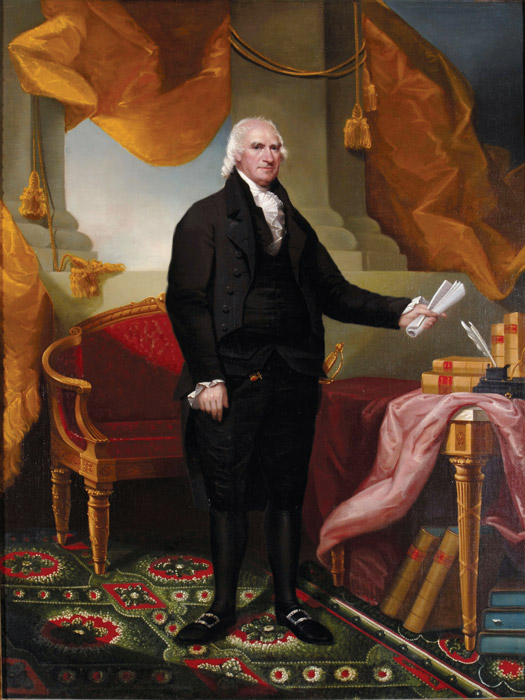
Gubernatorial portrait of George Clinton, by Ezra Ames.
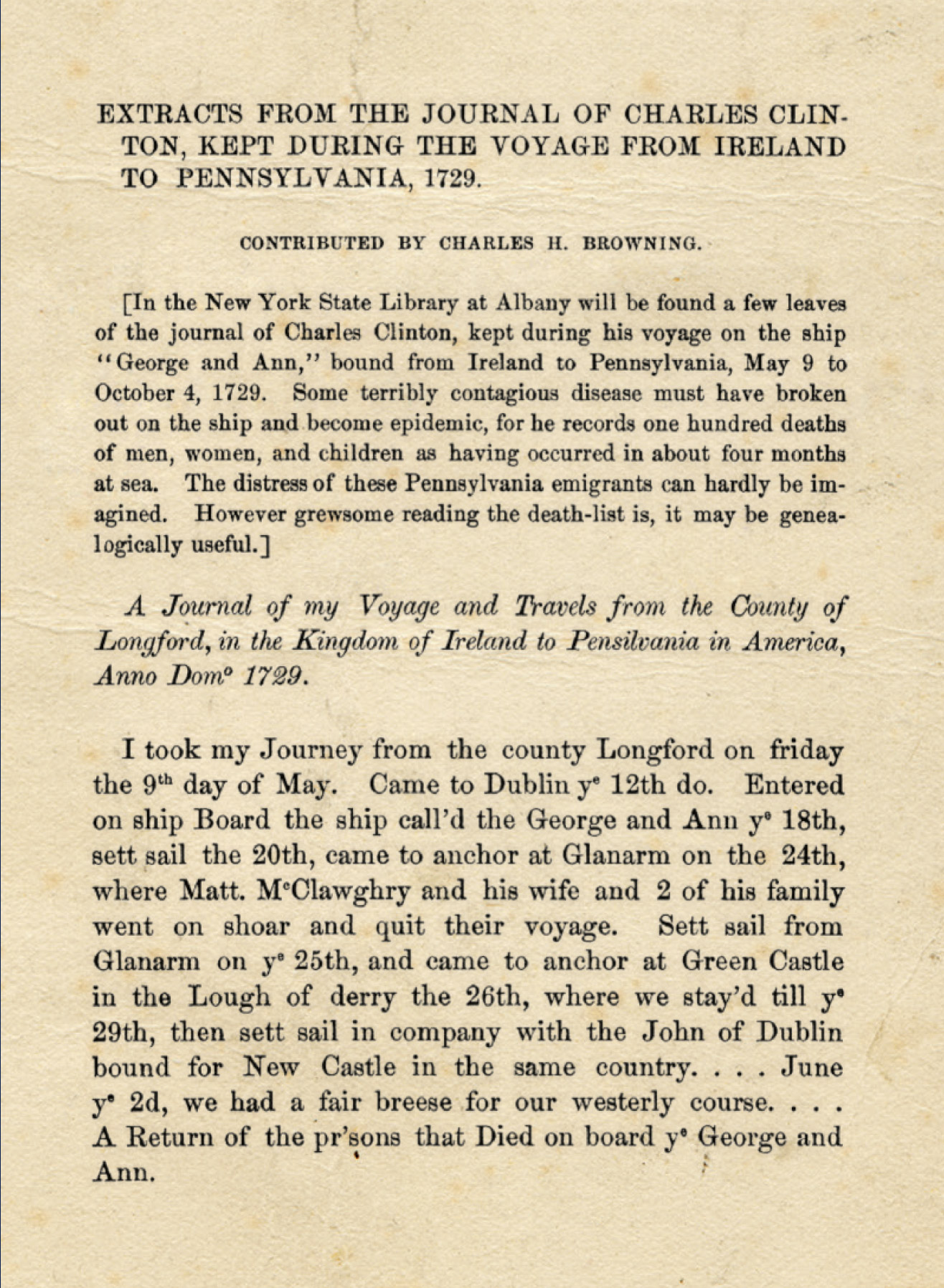
From The Pennsylvania Magazine of History and Biography (1902)

Map of Ulster County, New York: from original surveys, 1853 (Library of Congress)
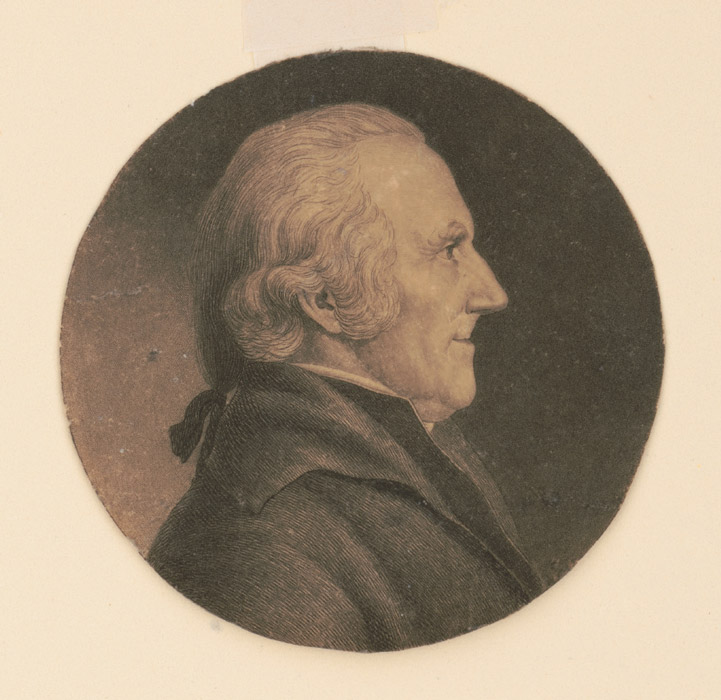
James Clinton, son of Charles (Library of Congress)
The Scotch-Irish and the Presidency
Of the 44 men who have served as President of the United States, no fewer than 20 have Scotch-Irish roots. The earliest was Andrew Jackson, whose parents came from County Antrim. President from 1829 to 1837, he was the first holder of the office not to have come from a privileged background. Several Presidents with links to Ulster have strong connections to New York City.
Ulysses S. Grant, 18th President (1869–77)
Grant’s Scotch-Irish ancestry was through his mother’s family, the Simpsons, who farmed for generations near Ballygawley, County Tyrone. In 1879, while on a world tour, Grant travelled through Tyrone, stopping in several Ulster towns and cities, including Belfast where he visited the shipyard of Harland & Wolff (where 30 years later the Titanic was built). Grant spent the final years of his life in New York City. He died in 1885 and it is believed that some 1.5 million people turned out to pay their respects as his funeral procession passed through the city.
Grant’s Scotch-Irish ancestry was through his mother’s family, the Simpsons, who farmed for generations near Ballygawley, County Tyrone. In 1879, while on a world tour, Grant travelled through Tyrone, stopping in several Ulster towns and cities, including Belfast where he visited the shipyard of Harland & Wolff (where 30 years later the Titanic was built). Grant spent the final years of his life in New York City. He died in 1885 and it is believed that some 1.5 million people turned out to pay their respects as his funeral procession passed through the city.
Chester A. Arthur, 21st President (1881–85)
In 1815 Chester A. Arthur’s father immigrated to America from Cullybackey, County Antrim. Chester was born in 1829, the last president until Barack Obama to be a first generation American. He spent much of his adult life in New York City, pursuing a career as a lawyer and holding a number of public offices. In 1880 Arthur became the 20th Vice President of United States. Following President Garfield’s assassination in 1881, he succeeded to the Presidency. The thatched cottage in Ulster that was once the home of the Arthur family is open to the public.
In 1815 Chester A. Arthur’s father immigrated to America from Cullybackey, County Antrim. Chester was born in 1829, the last president until Barack Obama to be a first generation American. He spent much of his adult life in New York City, pursuing a career as a lawyer and holding a number of public offices. In 1880 Arthur became the 20th Vice President of United States. Following President Garfield’s assassination in 1881, he succeeded to the Presidency. The thatched cottage in Ulster that was once the home of the Arthur family is open to the public.
Theodore Roosevelt, 26th President (1901–09)
Born in New York City in 1858, Theodore Roosevelt became President following the assassination of William McKinley, also of Scotch-Irish heritage. Roosevelt’s Ulster ancestors are said to have been Irvines, Craigs and Bullochs from the Gleno area of east County Antrim. He was fascinated by the contribution of the Scotch-Irish to the American frontier, describing them as a ‘stern, virile, bold and hardy people’.
Born in New York City in 1858, Theodore Roosevelt became President following the assassination of William McKinley, also of Scotch-Irish heritage. Roosevelt’s Ulster ancestors are said to have been Irvines, Craigs and Bullochs from the Gleno area of east County Antrim. He was fascinated by the contribution of the Scotch-Irish to the American frontier, describing them as a ‘stern, virile, bold and hardy people’.

The Great Seal of the United States, designed by Ulsterman Charles Thomson
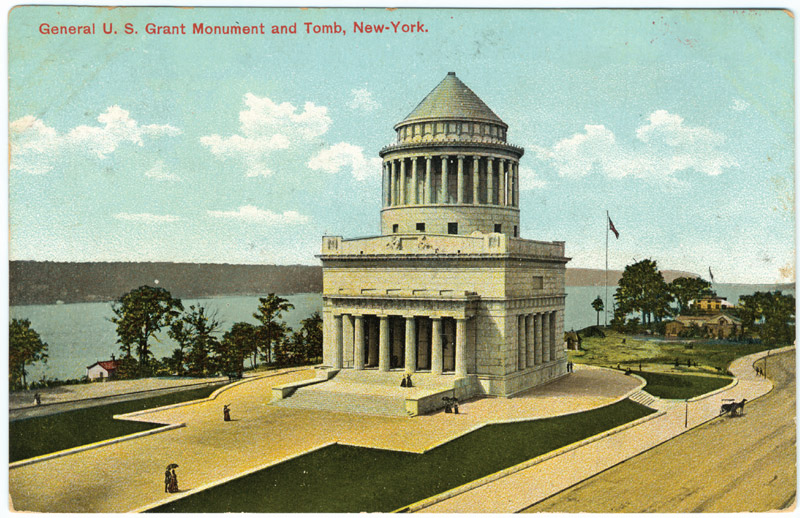
The General Grant National Memorial, Riverside Drive (The Miriam and Ira D. Wallach Division of Art, Prints and Photographs: Picture Collection, The New York Public Library)
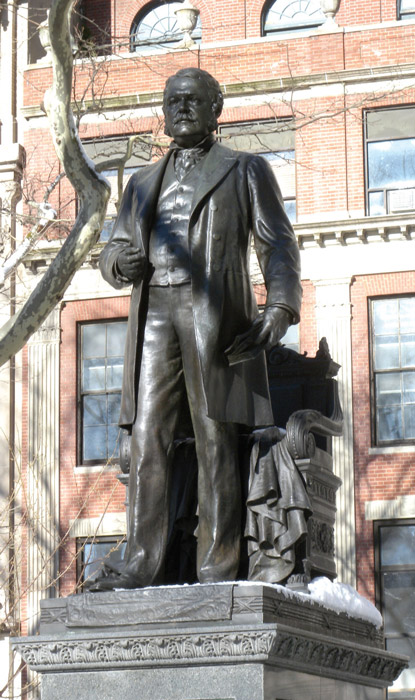
Statue of Chester A. Arthur in Madison Square Park

Theodore Roosevelt (Rare Book Division, The New York Public Library)
Merchant Princes and Retail Kings
By the mid eighteenth century strong commercial links had been established between New York and the northern ports of Ireland. The firm of Greg & Cunningham – founded in 1757 by Thomas Greg in Belfast and County Antrim-born Waddell Cunningham in New York – specialised in exporting flaxseed to Ireland and became the most successful transatlantic business partnership of the Colonial era.
Department Store Pioneer
In 1862, Alexander Turney Stewart from near Lisburn, County Antrim, opened the world’s largest department store – the ‘Great Iron Store’ in New York City. He subsequently founded an even more impressive shopping emporium which was known as the ‘Marble Palace’. One of America’s wealthiest retailers, he was also responsible for the development of Garden City on Long Island.
In 1862, Alexander Turney Stewart from near Lisburn, County Antrim, opened the world’s largest department store – the ‘Great Iron Store’ in New York City. He subsequently founded an even more impressive shopping emporium which was known as the ‘Marble Palace’. One of America’s wealthiest retailers, he was also responsible for the development of Garden City on Long Island.
A Presidential Hat-Maker
Starting out in a basement in New York City, Charles Knox, from Ramelton, County Donegal, went on to establish the largest hat manufacturing company in the world. Many of his employees were from his native county. Among the many customers of the Knox Hat Company were more than 20 US Presidents. Abraham Lincoln’s well-known ‘stovepipe’ hat was made by the firm.
Starting out in a basement in New York City, Charles Knox, from Ramelton, County Donegal, went on to establish the largest hat manufacturing company in the world. Many of his employees were from his native county. Among the many customers of the Knox Hat Company were more than 20 US Presidents. Abraham Lincoln’s well-known ‘stovepipe’ hat was made by the firm.
New York’s Links with Belfast
At the end of the nineteenth century Belfast was a major manufacturing center and the greatest linen-producing city in the world. Many of the leading firms established a presence in New York City – often younger sons were sent out to represent the family business. These families included the Ewarts, owners of the world’s largest linen firm, and the Sinclairs, pioneers of the meat-packing industry in the Midwest.
At the end of the nineteenth century Belfast was a major manufacturing center and the greatest linen-producing city in the world. Many of the leading firms established a presence in New York City – often younger sons were sent out to represent the family business. These families included the Ewarts, owners of the world’s largest linen firm, and the Sinclairs, pioneers of the meat-packing industry in the Midwest.
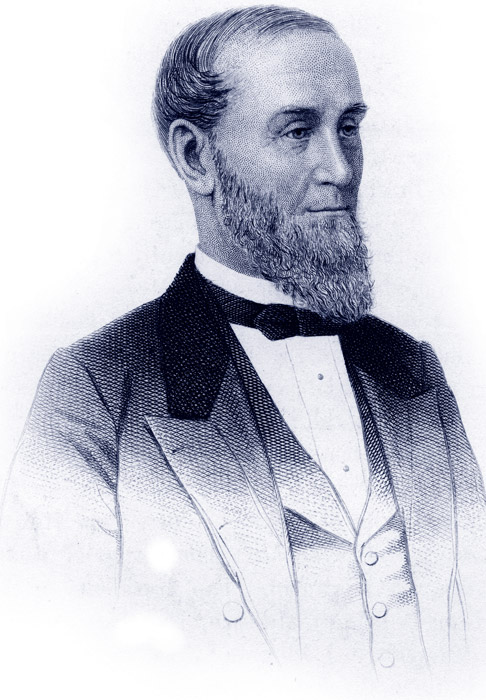
Alexander T. Stewart (The Miriam and Ira D. Wallach Division of Art, Prints and Photographs: Print Collection, The New York Public Library)
Educators and Philanthropists
As a people who have placed a high premium on learning, the Scotch-Irish have been to the fore in establishing schools and colleges and in promoting access to education. In Pennsylvania, Francis Alison, from County Donegal, taught five signatories of the Declaration of Independence (two of them from Ulster), the Secretary of the Continental Congress (who was from County Londonderry) and many other influential figures.
Henry M. MacCracken
A descendant of eighteenth-century Scotch-Irish immigrants, Henry Mitchell MacCracken was the sixth Chancellor of New York University. During his tenure, he established one of the earliest graduate schools of arts and science in the United States; a doctoral fellowship program in NYU is named in his honor. He delivered the annual address to the New York State Historical Association in 1912 on ‘The Scotch-Irish in America and in New York’. During his talk he revealed that his great-grandfather had been killed while serving in the Continental Army during the Revolutionary War.
A descendant of eighteenth-century Scotch-Irish immigrants, Henry Mitchell MacCracken was the sixth Chancellor of New York University. During his tenure, he established one of the earliest graduate schools of arts and science in the United States; a doctoral fellowship program in NYU is named in his honor. He delivered the annual address to the New York State Historical Association in 1912 on ‘The Scotch-Irish in America and in New York’. During his talk he revealed that his great-grandfather had been killed while serving in the Continental Army during the Revolutionary War.
Pioneer of Female Education
Thomas Hunter was born in the small seaport of Ardglass, County Down, into a family with Scottish roots. He immigrated to New York City in 1850 and worked as a teacher. In 1869–70 he was instrumental in founding what became the Normal College of the City of New York, the first publicly-supported teacher-training institution for women in the United States. Hunter served as president of the College until 1906 and in 1914 it was renamed in his honor. Today, Hunter College is part of the City University of New York.
Thomas Hunter was born in the small seaport of Ardglass, County Down, into a family with Scottish roots. He immigrated to New York City in 1850 and worked as a teacher. In 1869–70 he was instrumental in founding what became the Normal College of the City of New York, the first publicly-supported teacher-training institution for women in the United States. Hunter served as president of the College until 1906 and in 1914 it was renamed in his honor. Today, Hunter College is part of the City University of New York.
Generous Benefactor
Many Scotch-Irish businessmen and industrialists used their wealth to support various charitable causes. Ezekiel J. Donnell was born near Strabane, County Tyrone, and immigrated to the United States in 1840. Donnell became a successful cotton merchant in New York City. A strong believer in the importance of education, he gave $1m towards the building of a library in the city, which eventually resulted in the creation of the Donnell Library Center of the New York Public Library.
Many Scotch-Irish businessmen and industrialists used their wealth to support various charitable causes. Ezekiel J. Donnell was born near Strabane, County Tyrone, and immigrated to the United States in 1840. Donnell became a successful cotton merchant in New York City. A strong believer in the importance of education, he gave $1m towards the building of a library in the city, which eventually resulted in the creation of the Donnell Library Center of the New York Public Library.
Leading Figure in The YMCA
Of ‘sturdy Scotch-Irish stock’, according to his biographer, Robert Ross McBurney was born in Castleblayney, County Monaghan, the son of the local doctor. Immigrating to America in 1854, McBurney became the leading figure in the YMCA in New York City, serving as its secretary during a period of considerable expansion. In 1943, the branch in 7th Avenue (now in West 14th Street) was renamed the McBurney YMCA.
Of ‘sturdy Scotch-Irish stock’, according to his biographer, Robert Ross McBurney was born in Castleblayney, County Monaghan, the son of the local doctor. Immigrating to America in 1854, McBurney became the leading figure in the YMCA in New York City, serving as its secretary during a period of considerable expansion. In 1943, the branch in 7th Avenue (now in West 14th Street) was renamed the McBurney YMCA.
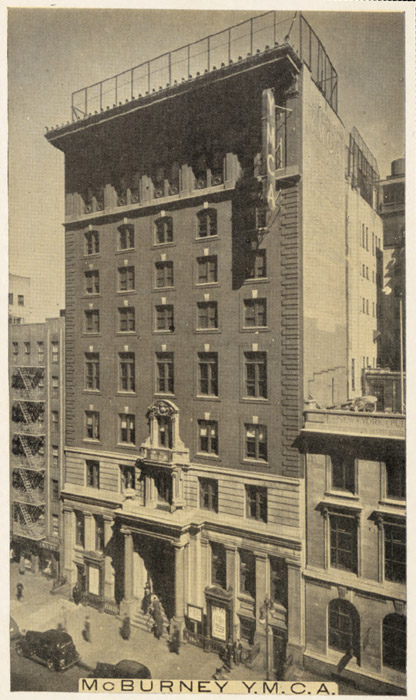
McBurney YMCA

The Normal College of the City of New York (The Miriam and Ira D. Wallach Division of Art, Prints and Photographs: Picture Collection, The New York Public Library)
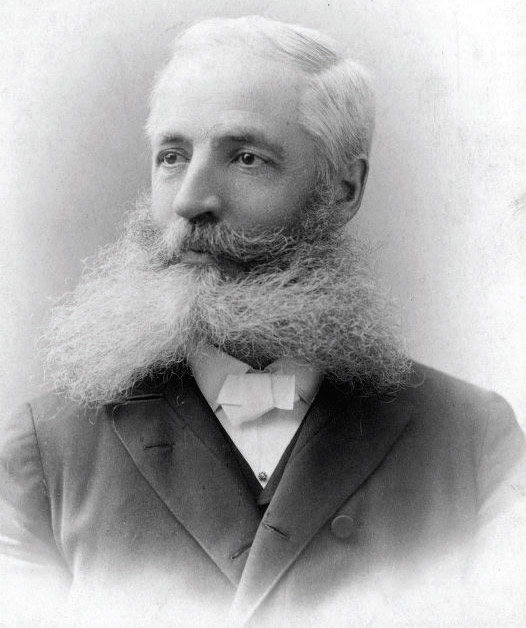
Henry M. MacCracken (University of Pittsburgh Historic Photographs)
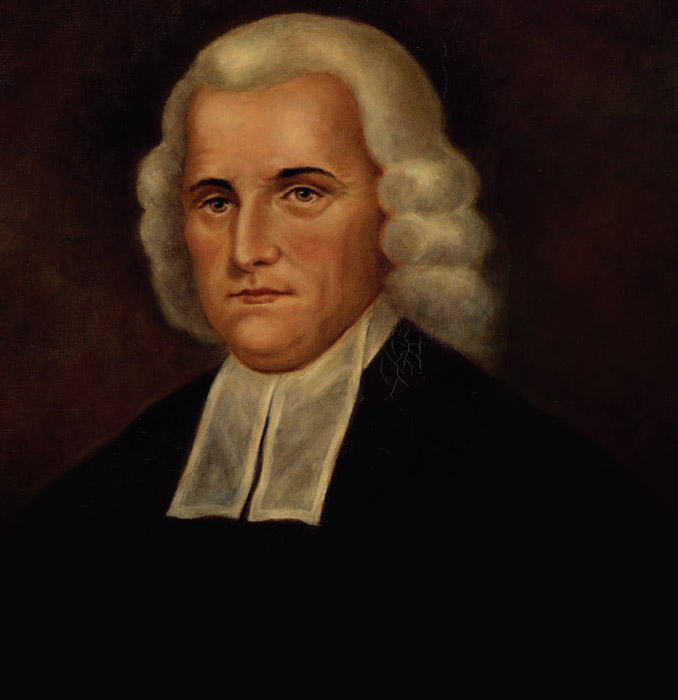
Francis Alison (Presbyterian Historical Society, Philadelphia)
Printers and Publishers
The Scotch-Irish have made important contributions to printing and publishing in the United States. In 1771 John Dunlap from Strabane, County Tyrone, founded the Pennsylvania Packet in Philadelphia, which later became the first successful daily newspaper in America. Dunlap was also responsible for printing the Declaration of Independence in 1776 and the US Constitution in 1787.
New York’s Official Printer
One of New York’s leading printers in the 1700s was Hugh Gaine from Portglenone, County Antrim. By 1752, he had established his own printing business, the Bible and Crown, and was publishing a newspaper, the New-York Mercury. From the late 1760s to 1775 he was the official printer for the city and colony of New York. Gaine was involved in a number of educational and charitable organisations, including the New York Society Library, the New York Hospital and the Friendly Sons of St Patrick.
One of New York’s leading printers in the 1700s was Hugh Gaine from Portglenone, County Antrim. By 1752, he had established his own printing business, the Bible and Crown, and was publishing a newspaper, the New-York Mercury. From the late 1760s to 1775 he was the official printer for the city and colony of New York. Gaine was involved in a number of educational and charitable organisations, including the New York Society Library, the New York Hospital and the Friendly Sons of St Patrick.
The ‘Conscience of America’
The New York Tribune was founded by ‘the conscience of America’, Horace Greeley, a fearsome opponent of slavery. His maternal ancestors, the Woodburns, had emigrated from Ulster to New England in the early 1700s. Of them he wrote, ‘whose store of Scottish and Scotch-Irish traditions, songs, anecdotes, shreds of history &c, can have rarely been equalled.’
The New York Tribune was founded by ‘the conscience of America’, Horace Greeley, a fearsome opponent of slavery. His maternal ancestors, the Woodburns, had emigrated from Ulster to New England in the early 1700s. Of them he wrote, ‘whose store of Scottish and Scotch-Irish traditions, songs, anecdotes, shreds of history &c, can have rarely been equalled.’
Pioneer of Investigative Journalism
Born near Cloughmills in County Antrim, Samuel Sidney McClure immigrated to America as a boy with his widowed mother. Moving to New York City, in 1884 he established the McClure Syndicate, the first successful venture of its kind in America. In 1893 he co-founded McClure’s Magazine, which pioneered investigative journalism through its exposure of corruption in business and government. In 1944 McClure was awarded the Order of Merit by the National Institute of Arts and Letters.
Born near Cloughmills in County Antrim, Samuel Sidney McClure immigrated to America as a boy with his widowed mother. Moving to New York City, in 1884 he established the McClure Syndicate, the first successful venture of its kind in America. In 1893 he co-founded McClure’s Magazine, which pioneered investigative journalism through its exposure of corruption in business and government. In 1944 McClure was awarded the Order of Merit by the National Institute of Arts and Letters.
Newspaperman and Ambassador
After Greeley’s death in 1872 the New York Tribune was purchased by Whitelaw Reid, the descendant of immigrants from County Tyrone. He later served as US Ambassador to France (1889–92) and the United Kingdom (1905–12). In April 1912 he visited Belfast to give a lecture on ‘The Scot in America and the Ulster Scot’, which was later published as a book.
After Greeley’s death in 1872 the New York Tribune was purchased by Whitelaw Reid, the descendant of immigrants from County Tyrone. He later served as US Ambassador to France (1889–92) and the United Kingdom (1905–12). In April 1912 he visited Belfast to give a lecture on ‘The Scot in America and the Ulster Scot’, which was later published as a book.
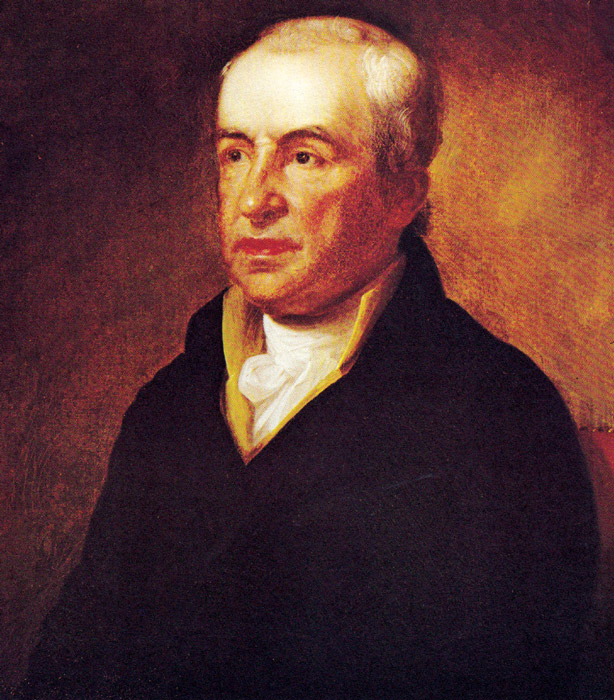
John Dunlap
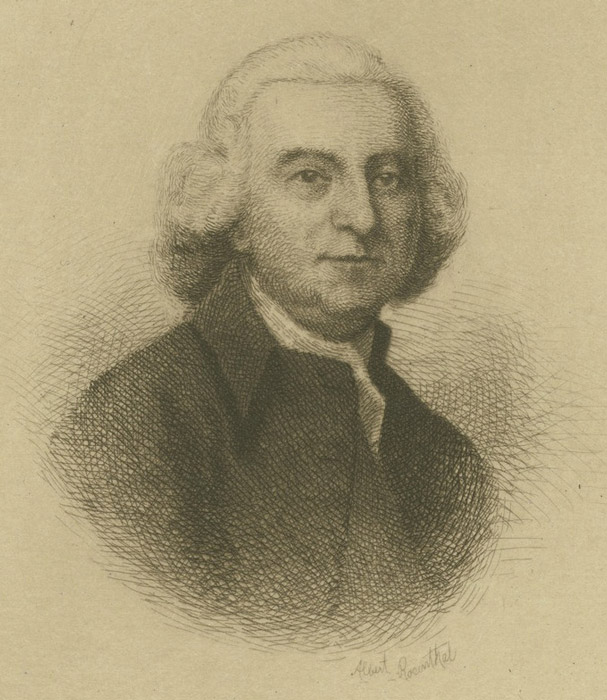
Hugh Gaine (The Miriam and Ira D. Wallach Division of Art, Prints and Photographs: Picture Collection, The New York Public Library)
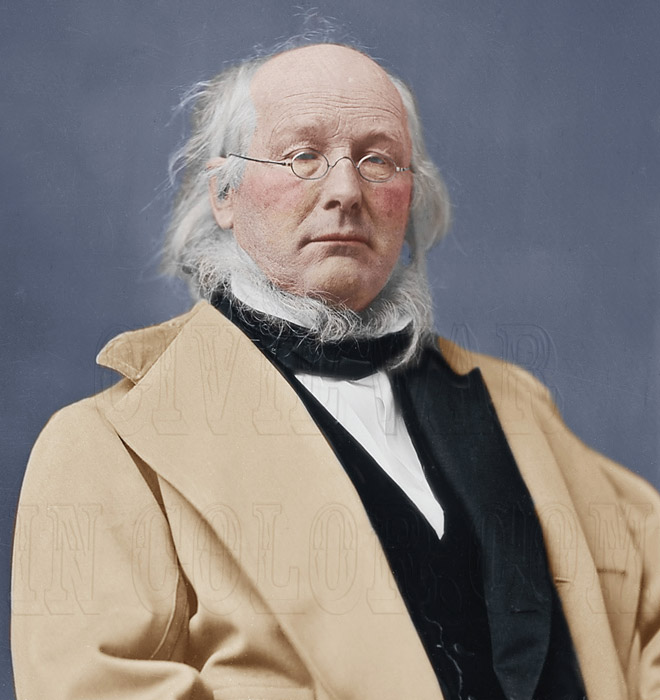
Horace Greeley
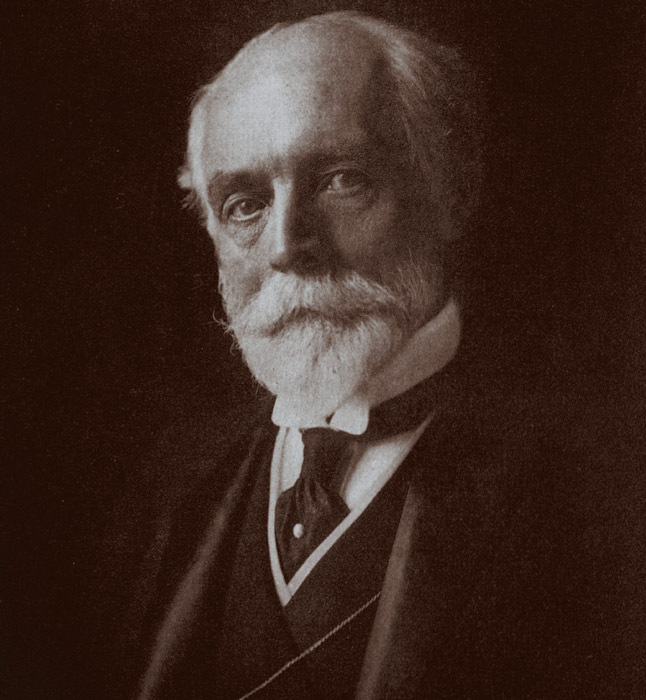
Whitelaw Reid
The Scotch-Irish and The Churches
From the first preachers of the late 1600s through to the present day, the Scotch-Irish contribution to religious life in America has been immense. Individuals of Ulster birth or background have played a key role in many religious denominations in New York City. However, for historical reasons it is with the various branches of Presbyterianism that they are especially associated.
The ‘Father of American Presbyterianism’
The man known as the ‘Father of American Presbyterianism’ was born near Ramelton, County Donegal, around 1658. In 1683 he was ordained for work in America and soon after sailed across the Atlantic to begin a pioneering ministry that would last until his death in 1708. In 1706 he was instrumental in organising the first presbytery in America, which met in Philadelphia.
The man known as the ‘Father of American Presbyterianism’ was born near Ramelton, County Donegal, around 1658. In 1683 he was ordained for work in America and soon after sailed across the Atlantic to begin a pioneering ministry that would last until his death in 1708. In 1706 he was instrumental in organising the first presbytery in America, which met in Philadelphia.
Triumph for Religious Liberty
In 1707, on the orders of Lord Cornbury, the governor of New York, Francis Makemie was arrested for preaching without a licence. At his trial Makemie argued that Cornbury had no authority to deny him his liberty to preach. He was acquitted, but was forced to pay the costs of his trial and imprisonment. The outcry against this resulted in a new law to prevent prosecution costs being charged against someone found innocent. Nearly three centuries later a bronze plaque was installed at Bowling Green, Broadway, describing the trial as ‘the first great victory here for religious liberty’.
In 1707, on the orders of Lord Cornbury, the governor of New York, Francis Makemie was arrested for preaching without a licence. At his trial Makemie argued that Cornbury had no authority to deny him his liberty to preach. He was acquitted, but was forced to pay the costs of his trial and imprisonment. The outcry against this resulted in a new law to prevent prosecution costs being charged against someone found innocent. Nearly three centuries later a bronze plaque was installed at Bowling Green, Broadway, describing the trial as ‘the first great victory here for religious liberty’.
Rev. John Hall and Fifth Avenue Presbyterian Church
Born at Ballygorman in County Armagh in 1829, John Hall became a Presbyterian minister in Ireland. In 1867 he accepted an invitation to become minister of what became Fifth Avenue Presbyterian Church in New York. His congregation grew to the point where it became the largest Protestant church in the city. A magnificent new church, described as a ‘Cathedral of Presbyterianism’, was completed in 1875. A passionate believer in the value of education, Hall served as Chancellor of New York University from 1881 to 1891. In the late 1880s he was one of the founders of the Scotch-Irish Society of America.
Born at Ballygorman in County Armagh in 1829, John Hall became a Presbyterian minister in Ireland. In 1867 he accepted an invitation to become minister of what became Fifth Avenue Presbyterian Church in New York. His congregation grew to the point where it became the largest Protestant church in the city. A magnificent new church, described as a ‘Cathedral of Presbyterianism’, was completed in 1875. A passionate believer in the value of education, Hall served as Chancellor of New York University from 1881 to 1891. In the late 1880s he was one of the founders of the Scotch-Irish Society of America.
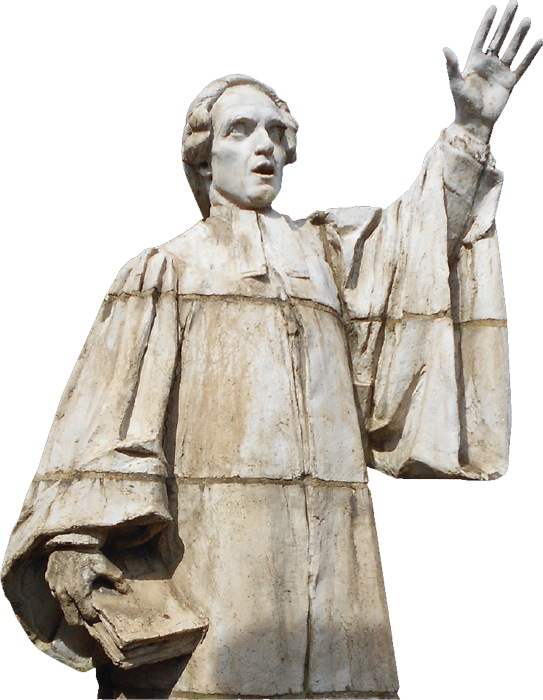
Makemie statue, Philadelphia

Rev. John Hall wrote the introduction to this 1896 illustrated edition of a famous poem by Scotland’s National Bard, Robert Burns, published to mark the centenary of Burns’ death. Printed by Marcus Ward & Co. Ltd., a famous Belfast printer who had premises in New York.

This painting by Henry A. Ogden recreates Makemie’s trial before Lord Cornbury. (Presbyterian Historical Society, Philadelphia)
The Livingston Family and Their Connections
The Livingston family has been one of the most influential political families in American history. They descended from Scotsman Rev. John Livingston, one of the earliest Presbyterian ministers in Ulster. In 1636 Livingston took part in the first, though ultimately unsuccessful, attempt to establish a colony of Ulster Presbyterians in the New World. John’s son Robert was the founder of the family in America.
America’s First Military Hero
Robert R. Livingston’s sister Janet was married to Richard Montgomery, whose ancestors had moved from Scotland to County Donegal in the 1600s. Montgomery is considered America’s first military hero. Leading his troops into Canada in the autumn of 1775, he secured the first successes for the Continental Army. However, on 31 December 1775 he was killed while trying to capture Quebec.
Robert R. Livingston’s sister Janet was married to Richard Montgomery, whose ancestors had moved from Scotland to County Donegal in the 1600s. Montgomery is considered America’s first military hero. Leading his troops into Canada in the autumn of 1775, he secured the first successes for the Continental Army. However, on 31 December 1775 he was killed while trying to capture Quebec.
Robert R. Livingston
Robert R. Livingston was the great-great-grandson of Rev. John Livingston. He was a member of the ‘Committee of Five’ that prepared the Declaration of Independence in 1776. Livingston served as US Minister to France under President Thomas Jefferson from 1801 to 1804. During that time he negotiated the Louisiana Purchase, which doubled the size of the United States, signing the treaty with France on 30 April 1803.
Robert R. Livingston was the great-great-grandson of Rev. John Livingston. He was a member of the ‘Committee of Five’ that prepared the Declaration of Independence in 1776. Livingston served as US Minister to France under President Thomas Jefferson from 1801 to 1804. During that time he negotiated the Louisiana Purchase, which doubled the size of the United States, signing the treaty with France on 30 April 1803.
Engineering Genius
While in France, Robert R. Livingston met Robert Fulton, one of the greatest of America’s engineers and inventors. Born into a Scotch-Irish family in Pennsylvania, Fulton was a pioneer of marine transportation. He and Livingston co-operated on a number of projects, including, in 1807, the first commercially successful steamboat, which travelled from New York City to Albany. Fulton died in New York City in 1815 and was buried in Trinity Church Cemetery.
While in France, Robert R. Livingston met Robert Fulton, one of the greatest of America’s engineers and inventors. Born into a Scotch-Irish family in Pennsylvania, Fulton was a pioneer of marine transportation. He and Livingston co-operated on a number of projects, including, in 1807, the first commercially successful steamboat, which travelled from New York City to Albany. Fulton died in New York City in 1815 and was buried in Trinity Church Cemetery.

Rev. John Livingston
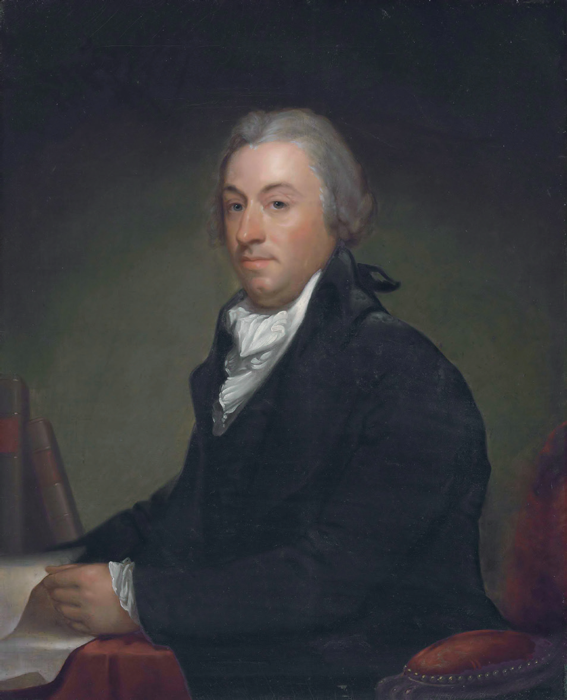
Robert R. Livingston
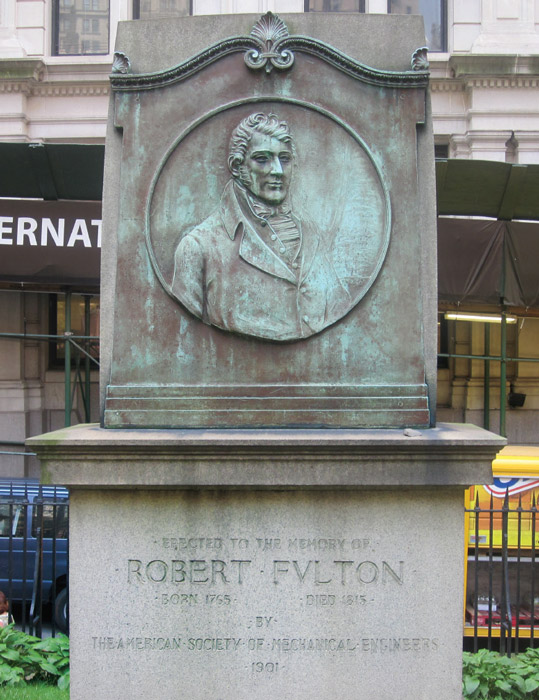
Monument to Robert Fulton in Trinity Church Cemetery (Billy Hathorn at English Wikipedia)
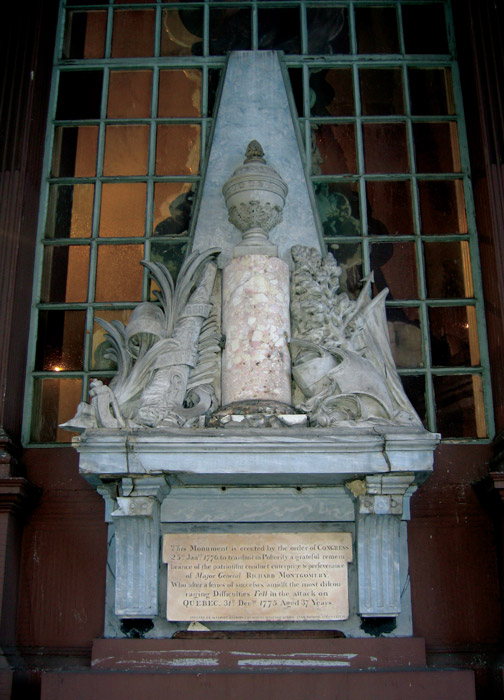
Monument to Richard Montgomery in St Paul’s Chapel
The Scotch-Irish Contribution to Literature
The Scotch-Irish contribution to literature is substantial and distinguished. Leading authors with Ulster roots include Edgar Allan Poe, Mark Twain and John Steinbeck. In 1952 Steinbeck, who died in New York City in 1968, visited County Londonderry in search of his Hamilton forebears. His novel East of Eden includes a Hamilton family based on his Ulster ancestors.
The Man Who Travelled the World with General Grant
John Russell Young was born near Donemana, County Tyrone, and moved to America as a child. He worked for several newspapers, including the New York Tribune and New York Herald. In 1877–9 accompanied former President Ulysses S. Grant on his world tour and subsequently published Around the World with General Grant. In 1882, on Grant’s recommendation, he was appointed US Minister to China by President Chester A. Arthur. In 1897, Young was chosen as the Librarian of Congress by President William McKinley. His appointment was confirmed by Congress, the first time this had occurred.
John Russell Young was born near Donemana, County Tyrone, and moved to America as a child. He worked for several newspapers, including the New York Tribune and New York Herald. In 1877–9 accompanied former President Ulysses S. Grant on his world tour and subsequently published Around the World with General Grant. In 1882, on Grant’s recommendation, he was appointed US Minister to China by President Chester A. Arthur. In 1897, Young was chosen as the Librarian of Congress by President William McKinley. His appointment was confirmed by Congress, the first time this had occurred.
The James Family
Henry James is widely regarded as one of America’s most gifted authors. His brother William was a major figure in the philosophical movement known as pragmatism, while their sister Alice was best known for her diaries. All three were born in New York. The siblings’ great-grandfather was William James, a Presbyterian tenant farmer from near Bailieborough, County Cavan. Their grandfather, also William James, immigrated to America around 1790 and went on to make a fortune through business, banking and real estate. A stained-glass window in Bailieborough Parish Church commemorates several generations of the family.
Henry James is widely regarded as one of America’s most gifted authors. His brother William was a major figure in the philosophical movement known as pragmatism, while their sister Alice was best known for her diaries. All three were born in New York. The siblings’ great-grandfather was William James, a Presbyterian tenant farmer from near Bailieborough, County Cavan. Their grandfather, also William James, immigrated to America around 1790 and went on to make a fortune through business, banking and real estate. A stained-glass window in Bailieborough Parish Church commemorates several generations of the family.
Champion of Women’s Rights
Born near Cookstown, County Tyrone, Maude Glasgow (1876–1955) moved to New York and studied nursing and then medicine, graduating from Cornell University Medical College in 1901. She worked as a Medical Inspector in the New York Department of Health and was the chief woman physician of the New York Telephone Company. She was also a champion of women’s rights and welfare, writing many essays and books on these subjects, and was an active supporter of the American Medical Women’s Association. Ever conscious of her roots, in 1936 she published a substantial book entitled The Scotch-Irish in Northern Ireland and in The American Colonies.
Born near Cookstown, County Tyrone, Maude Glasgow (1876–1955) moved to New York and studied nursing and then medicine, graduating from Cornell University Medical College in 1901. She worked as a Medical Inspector in the New York Department of Health and was the chief woman physician of the New York Telephone Company. She was also a champion of women’s rights and welfare, writing many essays and books on these subjects, and was an active supporter of the American Medical Women’s Association. Ever conscious of her roots, in 1936 she published a substantial book entitled The Scotch-Irish in Northern Ireland and in The American Colonies.

The James family window in Bailieborough Parish Church
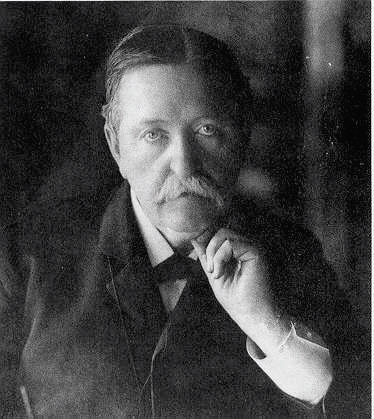
John Russell Young

Maude Glasgow
Promoting Friendship and Providing Support
Over the centuries, the Scotch-Irish have joined together to form fraternal organisations, clubs and societies. These have promoted their shared heritage, offered financial support for families in need and provided opportunities to build friendships. Three organisations with particular relevance to the Scotch-Irish in New York are the Friendly Sons of St Patrick, the Scotch-Irish Society of America and the Ulster-Irish Society.
Friendly Sons of St Patrick
The Friendly Sons of St Patrick of New York was formed in the winter of 1783–4 to offer assistance to immigrants from Ireland in situations of need. The man behind the formation of the society and its first president was Daniel McCormick from Dundonald, County Down. McCormick was a successful merchant and was a founder, along with Alexander Hamilton and others, of the Bank of New York. He was also a trustee of the First Presbyterian Church of New York.
The Scotch-Irish Society of America
In the late nineteenth century Americans of Ulster heritage formed the Scotch-Irish Society of America. The origins of the Society can be found in the Pan-Presbyterian Council held in Belfast in 1884, which included a ‘Scotch-Irish Reunion’. The first President of the Society was Robert Bonner, the owner of the New York Ledger and a native of Ramelton, County Donegal.
Ulster-Irish Society of New York
The Ulster-Irish Society of New York was founded in 1927 and was open to anyone of Ulster birth or descent. In 1933 Amelia Earhart was the guest of honor at the Society’s annual dinner, where she revealed that she had ancestors from Londonderry. On this occasion she was presented with a roll of linen woven from flax that was grown in the field near Londonderry where she had landed in May 1932 at the end of her transatlantic flight. In 1948, Eleanor Roosevelt was similarly honored by the Society due to her ancestral connections with Ulster.
“It was a delightful dinner, and I was further overwhelmed by the presentation of some real Irish linen, sent by the Irish Linen Society of Belfast. I have not seen such beautiful linen in a long time, and my one desire now is to find out where one acquires such fine linen locally in New York.”
Eleanor Roosevelt, 8 March 1948
Friendly Sons of St Patrick
The Friendly Sons of St Patrick of New York was formed in the winter of 1783–4 to offer assistance to immigrants from Ireland in situations of need. The man behind the formation of the society and its first president was Daniel McCormick from Dundonald, County Down. McCormick was a successful merchant and was a founder, along with Alexander Hamilton and others, of the Bank of New York. He was also a trustee of the First Presbyterian Church of New York.
The Friendly Sons of St Patrick of New York was formed in the winter of 1783–4 to offer assistance to immigrants from Ireland in situations of need. The man behind the formation of the society and its first president was Daniel McCormick from Dundonald, County Down. McCormick was a successful merchant and was a founder, along with Alexander Hamilton and others, of the Bank of New York. He was also a trustee of the First Presbyterian Church of New York.
The Scotch-Irish Society of America
In the late nineteenth century Americans of Ulster heritage formed the Scotch-Irish Society of America. The origins of the Society can be found in the Pan-Presbyterian Council held in Belfast in 1884, which included a ‘Scotch-Irish Reunion’. The first President of the Society was Robert Bonner, the owner of the New York Ledger and a native of Ramelton, County Donegal.
In the late nineteenth century Americans of Ulster heritage formed the Scotch-Irish Society of America. The origins of the Society can be found in the Pan-Presbyterian Council held in Belfast in 1884, which included a ‘Scotch-Irish Reunion’. The first President of the Society was Robert Bonner, the owner of the New York Ledger and a native of Ramelton, County Donegal.
Ulster-Irish Society of New York
The Ulster-Irish Society of New York was founded in 1927 and was open to anyone of Ulster birth or descent. In 1933 Amelia Earhart was the guest of honor at the Society’s annual dinner, where she revealed that she had ancestors from Londonderry. On this occasion she was presented with a roll of linen woven from flax that was grown in the field near Londonderry where she had landed in May 1932 at the end of her transatlantic flight. In 1948, Eleanor Roosevelt was similarly honored by the Society due to her ancestral connections with Ulster.
“It was a delightful dinner, and I was further overwhelmed by the presentation of some real Irish linen, sent by the Irish Linen Society of Belfast. I have not seen such beautiful linen in a long time, and my one desire now is to find out where one acquires such fine linen locally in New York.”
Eleanor Roosevelt, 8 March 1948
The Ulster-Irish Society of New York was founded in 1927 and was open to anyone of Ulster birth or descent. In 1933 Amelia Earhart was the guest of honor at the Society’s annual dinner, where she revealed that she had ancestors from Londonderry. On this occasion she was presented with a roll of linen woven from flax that was grown in the field near Londonderry where she had landed in May 1932 at the end of her transatlantic flight. In 1948, Eleanor Roosevelt was similarly honored by the Society due to her ancestral connections with Ulster.
“It was a delightful dinner, and I was further overwhelmed by the presentation of some real Irish linen, sent by the Irish Linen Society of Belfast. I have not seen such beautiful linen in a long time, and my one desire now is to find out where one acquires such fine linen locally in New York.”
Eleanor Roosevelt, 8 March 1948

Friendly Sons of St. Patrick
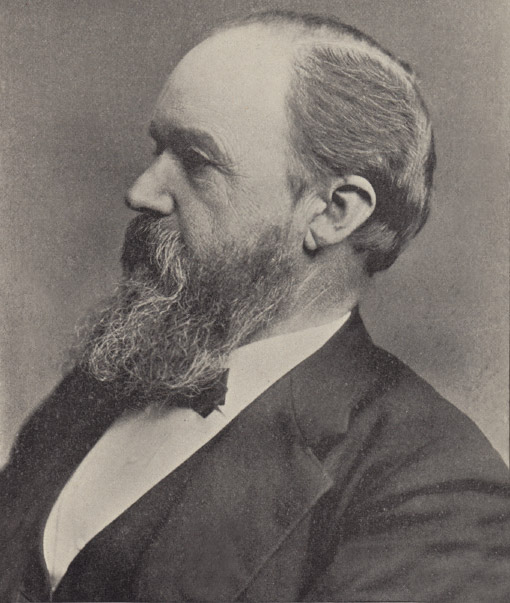
Robert Bonner

Ulster-Irish Society of New York annual banquet, Hotel Commodore, 19 March 1937
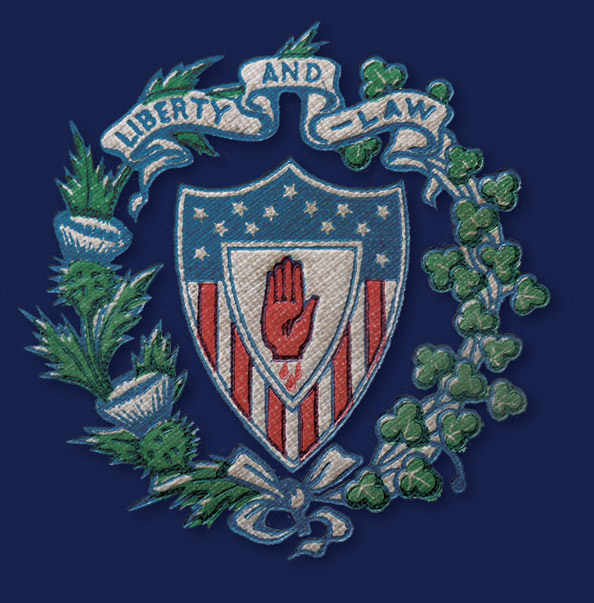
Emblem of the Scotch-Irish Society

